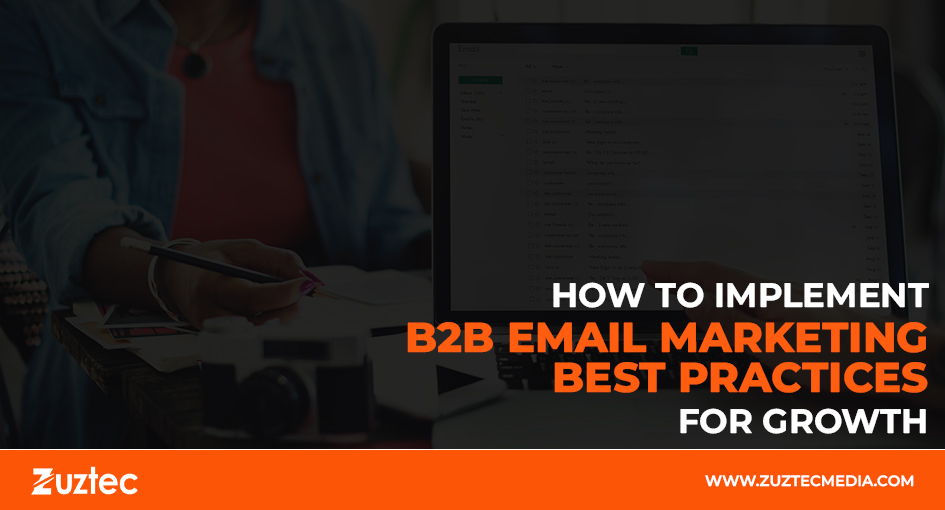
How to Implement B2B Email Marketing Best Practices for Growth
B2B email marketing is a cornerstone of modern business strategy, providing a direct channel to communicate with potential clients, nurture relationships, and drive sales. Unlike consumer-focused campaigns, B2B email marketing requires a unique set of best practices tailored to the professional audience. Implementing B2B email marketing best practices ensures that your messages resonate with your target market, build trust, and ultimately lead to conversion. These practices include audience segmentation, personalized messaging, strategic content creation, and ensuring optimal timing and frequency of emails.
Segmentation allows marketers to categorize their audience based on factors like industry, company size, or previous interactions, which can significantly boost engagement. Crafting personalized messages for each segment increases the relevance and effectiveness of your communication. Additionally, using strong, clear calls to action and designing for mobile devices ensures that your emails are accessible and actionable. By applying optimal strategies for B2B email marketing, businesses can improve their open and click-through rates, generating more high-quality leads and fostering long-term business relationships.
In today’s digital world, delivering timely, valuable content that aligns with audience needs is crucial for growth. Mastering these strategies builds credibility, enhances client retention, and gives businesses a competitive edge, making email marketing a powerful marketing tool.
Implement B2B Email Marketing Best Practices for Growth
The Importance of Audience Segmentation
One of the core B2B email marketing best practices is audience segmentation. Unlike mass email blasts, segmentation allows you to deliver personalized content tailored to specific segments of your audience. For example, you can group your audience based on factors like industry, job title, past interactions, or purchase behavior. Segmenting your email list ensures that your messaging is relevant, which boosts open and click-through rates.
Customization extends beyond only referring to recipients by first name. It includes sending industry-specific insights, case studies, and product recommendations based on previous behavior. By crafting emails that speak directly to the needs and interests of a specific segment, you’re more likely to increase engagement, build trust, and ultimately drive conversions.
Crafting Compelling Content and Strong CTAs
Creating high-quality, valuable content is crucial in optimal strategies for B2B email marketing. Professionals are busy, so it’s essential to deliver content that solves a problem or answers a question they may have. Your emails should focus on offering relevant, educational content that guides recipients toward taking action. For instance, you might share insightful white papers, webinars, or new industry reports to demonstrate your company’s thought leadership.
Equally important is crafting strong calls to action (CTAs). Each email should have a clear, concise CTA that guides the recipient on what to do next, whether it’s downloading a report, signing up for a demo, or scheduling a consultation. A well-placed, compelling CTA increases the likelihood of driving conversions, which is a key goal of any B2B email marketing best practice.
Optimizing for Mobile Devices
In today’s digital landscape, ensuring that your emails are optimized for mobile devices is no longer optional. Mobile devices account for nearly half of all email opens, so ensuring that your email design is responsive is vital. This means using a clean, simple layout, concise text, and large buttons for CTAs that are easily tappable on small screens.
Using mobile-friendly templates ensures your emails look professional and are easily readable on any device, which contributes to a better user experience and higher engagement. As part of B2B email marketing best practices, always preview your emails on multiple devices to ensure they render correctly.
Timing and Frequency of Emails
Email timing has a big influence on reader engagement. Sending emails too frequently can overwhelm your audience, leading to higher unsubscribe rates. Conversely, sending too frequently may cause your prospects or clients to forget about your brand. Therefore, finding the right balance is key to long-term success.
Test different sending times and frequencies to see what works best for your audience. Many professionals prefer receiving emails early in the morning or at the beginning of the workweek when they are most focused. However, as every audience is different, A/B testing will help determine the optimal times for your business. Effective scheduling of email campaigns is another important aspect of B2B email marketing best practices.
Analyzing and Refining Campaigns
Constant evaluation and refinement are essential to successful email marketing. Regularly tracking key performance indicators (KPIs) such as open rates, click-through rates, and conversions will help you understand which emails perform well and which need improvement. A/B testing different subject lines, content, and designs will give you insights into what resonates with your audience.
By analyzing your results and adjusting your strategy accordingly, you can continuously improve your email marketing performance. Implementing data-driven changes ensures that your email campaigns remain effective and aligned with your business goals. This iterative approach is critical for staying competitive and should be included in any plan that follows B2B email marketing best practices.
In summary, implementing B2B email marketing best practices is essential for driving growth, generating leads, and maintaining strong relationships with clients. From audience segmentation to crafting compelling content, optimizing for mobile, and analyzing campaign performance, every element of your email strategy plays a vital role in achieving success. By consistently following these best practices, businesses can increase engagement, improve conversion rates, and foster long-term customer relationships. Investing time and effort into refining your email marketing efforts will ensure that your business continues to grow and adapt in the competitive B2B landscape.

